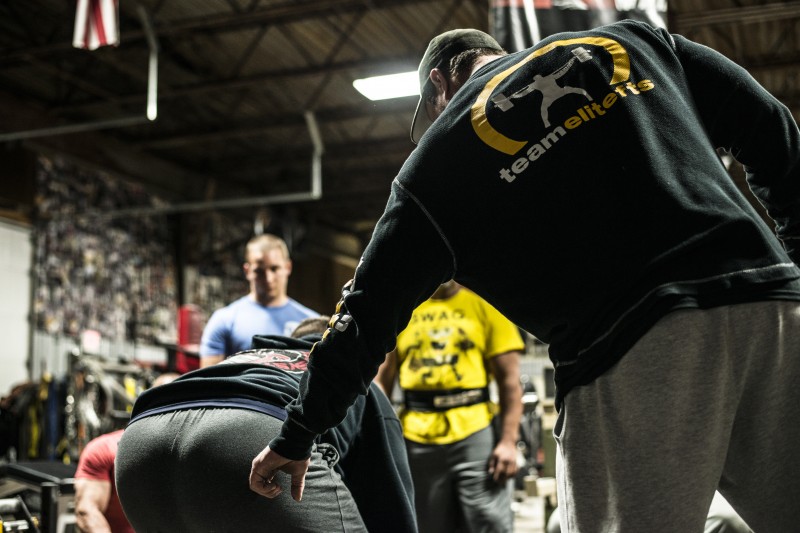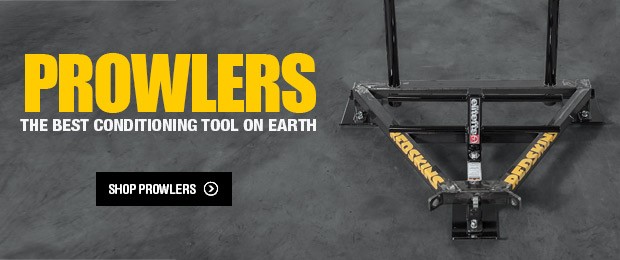
This is a critical time of the year for strength coaches. Most of our athletes are free from the constraints of a heavy course load, practice schedule, study hall and game competition, and most sports coaches are recruiting or are on vacation. This means that we're free—free to concentrate on preparing our players for the upcoming fall season, which means nine weeks of strength and conditioning bliss and nine weeks of scheduling, programming and executing our own version of “the master plan.”
Amidst all the excitement of having the athletes to ourselves, we have to check ourselves before we wreck ourselves. What do I mean by that? This is the most important time to get everything that you do right. The way that you run your program from A to Z must be on point, assistants must know their roles and your coaching needs to be right where it should be. I've said this before a million times—in order to be successful in this business, don't be a phony. Be yourself. I'm not talking about screaming, yelling or any other motivational tactics that you may use in trying to push an athlete to a PR in 100 degree weather. I'm talking about teaching your athletes how to do things correctly and getting them back into strength and conditioning mode.
If you're like most schools, the last official contact that you've had with your athletes may have been the spring game or maybe a few days right before exams. Leading up to that, I'm sure that you haven't done many of the more complex lifts during spring ball. It may have been awhile since you've hit the big stuff. On top of that, you now have a crop of new players who have never been in your program before and are starting from scratch. This is why your “teaching” is so important now more than at any other time of the year.
WATCH: Training Camp Q&A — What Do You Wish You Would've Done Sooner?
The best advice that I can give is have a step-by-step plan breaking down the program, especially how you'll coach the compound lifts. Make sure that each step becomes natural before moving on to the next one. This is what I mean by one step forward and two steps back. It's difficult (especially for me) to have patience when teaching the steps that you chose on the path to compound movements. Let’s take a power clean for example. You've chosen a jump shrug to emphasize triple extension, and your athlete has mastered this in two weeks. Maybe you'll head to the hang clean next. You've taken one step forward in mastering the jump shrug. Your athlete sets up for the hang clean, stands straight up and does a beautiful reverse curl. There isn't any triple extension or shrug, just a nice big 185-lb, six inches away from the shoulder at the top, reverse curl. There you go. You've taken two steps back.
This is the hardest part of coaching, especially if you're new to the profession. You want your athletes to succeed. You want them to get PRs. You want to tell people how strong they are, post a video of the lift, and—bam—get your own head job. It’s that simple, right? I wish it was, and believe it or not, I've seen it happen. But we're talking about you and your athletes and how to make yourself a better coach. In times like this, when you're planning your summer assault, it's time to ask yourself and your staff the right questions so that you can eliminate the two steps back and just keep taking steps forward.
The most important thing is always ask why! Why are you doing what you're doing? If you can ask and answer that question of every part of what you do in your program, read no further, my friend. You've got it. If you can't, get your ass back to the drawing board and don’t come out until you can. I'll use the power clean again as an example to make a point of how you should be looking at the decisions you make.
Why do you do the power clean? Is it because everyone else does it or because you want your athletes to be more explosive? I know it sounds stupid, but this is the simple, straightforward way that you ask yourself things in order for your program to be run correctly—your way. I'll answer these questions just so you can understand my thought process. If you're doing a certain lift just because other programs are doing it, you have a long way to go. The worst part of this business is how we judge one another for no apparent reason other than to make ourselves feel better on things perceived, real or not. It's stupid, and in reality, I'll fill you in on a little secret—no one really cares what you're doing! No one has the same situation as you, so their perceived judgment of you means nothing. They don't have your background, your athletes, your facilities, your staff or your way of doing things. So as Public Enemy says, "Don’t believe the hype."
RECENT: Communication in Strength and Conditioning — The Heartbeat of a Successful Program
In basic terms, don't just do things because others do them. Everything you do must have a reason and a purpose and that isn't one. If you're training your athletes to be more explosive, you're on to something! This is why when you're planning to add any exercise to your program, you have to ask, "Will it make my athletes stronger, more powerful or faster?" If it hits on one of those, it stays. If it doesn’t, it goes.
So you've made a decision (yours) to add the power clean. You've brought it into athletics because you wanted your athletes to be as powerful as Olympic lifters. You know that to perform the lift correctly and to get the right benefits from it, you need triple extension! So you put a plan together, break down the lift and teach it step by step until it's natural for the athletes. Patience and innovation keep you in the game, and it's finally time to execute a clean from the floor. The athletes do their reps, and you realize that nothing is lost from your steps in training. The carryover in form is perfect and natural, and your athletes improve. A perfect plan, along with perfect execution, equals a great result and all because you asked the right questions, put together a solid and easy to implement plan and properly executed it. You didn't take any steps back. They were all forward. You were always inching your way to success.
This is the process that you should follow in all aspects of your program to keep stepping forward. A little patience and innovation will keep you from taking any steps back, and your athletes and program will flourish. Good luck this summer.











